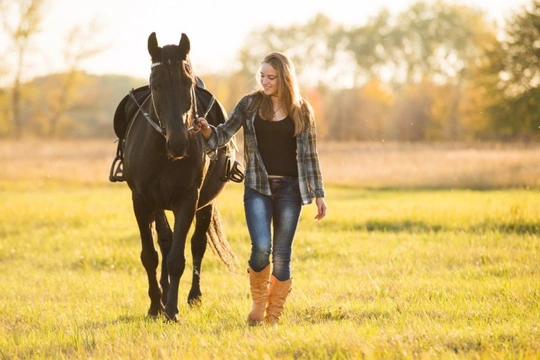Pets
Pets for studWanted petsBreedersAccessories & services
Knowledge hub
Support
Support & safety portal
Keeping Your Horse Protected From Theft And Straying
Every horse owner recognises the importantance of keeping their tack and equine possessions safe from theft but how do you protect your horse? How can you make certain that your horse can be reunited with you if he is recovered after theft or found after straying? Here are some simple suggestions to keep your equine friend safe and to offer peace of mind.
Microchipping your horse
With effect from October 2020, it is the law in England and Wales that all horses, ponies and donkeys carry a microchip. The chip is inserted into the nuchal ligament in the neck of the animal by a vet. The microchip can trace the horse back to the owner. A microchip sticker can be added to the horse’s passport.
From October 2020, any horse in England and Wales must be registered with the Central Equine Database (CED) or National Equine Database (NED) as it is sometimes called – this is one in the same thing. This means that anyone checking the microchip can identify the owner via the PIA – Passport Issuing Authority sometimes also referred to as Passport Issuing Organisation or PIO.
This only applies to animals registered with Passport Issuing Authorities in England and Wales. Owners of imported horses subject to the legislation in England and Wales and registered with PIAs outside England and Wales (and this includes Eire, the Republic of Ireland) will need to have their horse’s passport overstamped by a PIA in either England or Wales and then the microchip number can be entered on the National Equine Database.
Stolen or straying horses can be recovered to their homes by scanning the microchip number but only if the details attached to the chip are kept up to date.
Freezemarking
Many warmbloods have a brand to denote their breed but horses can also be freezemarked with a unique number and letter sequence which provides proof of their identity and ownership and is a visual deterrent against theft. With the legal requirement to microchip, freezemarking has become less popular but some people still opt for it as it is a visible disincentive whereas the microchip is invisible. Even if your horse is freezemarked, the law will still require him to have a microchip.
What are the other options to keep your horse safe from theft?
- Start a ‘Horsewatch’ group in your neighbourhood or local community, don’t just involve horse owners but anyone who can help keep an eye out for unusual activity such as farmers and landowners. Horsewatch groups can be used to quickly share information about suspicious behaviour and help keep horses, tack and trailers safe from theft
- Make sure that yards and fields are safe and secure when there is no-one on site. New technology like doorbell apps can be useful in monitoring premises when you are not there
- Use security lighting to deter thieves or prowlers
- Gates on the yard and to grazing fields should always be securely locked
- Install field alarms
- Make access and departure from the yard difficult by placing obstructions like other vehicles in the way – slowing down intruders allows more time for them to be detected
- If your horse is out 24/7, he should be checked twice daily, try and vary the times if you can, not always possible if you are feeding but if you are only checking and removing droppings then by changing the times that you visit, it will make it more difficult for thieves to anticipate when are likely to turn up
- Don’t leave headcollars on grass kept horses or leave them on the gate or within easy reach, you just make it easier for someone to catch your horse and lead him away
- If you field or yard is within sight of a footpath or bridlepath then ask regular walkers to keep an eye out
- Leave your contact details on a sign that is clearly visible on the gate so a passer by can contact you if they see anything suspicious
How to manage straying horses
- Always ensure your field fencing is secure and do a walk round every day to check for breaks and damage
- Electric fencing may not be enough to keep in serial escape artists particularly if they are wearing rugs in the winter
- Make sure your horse has enough to eat – many cases of straying take place during the colder months when horses try and push out of the field if they don’t have enough grass or hay. If you remove the inducement to escape then this can be the best way to solve this problem
- If you have a persistent offender, try and turn this horse out when you are on the yard and able to keep an eye on him and take any action if required – stable the horse when you are not there
- If your horses are grazing on a rotation then an adjacent field with good grass can be an inducement to stop your horse from wandering off – most horses will escape to look for food. However, unrestricted access to lush grazing will cause health issues for horses who have been out of their field for sometime including laminitis and colic
Always make sure that your horse can be traced back to you and that the microchip details are up to date.
Ensure your contact information is easy to find if someone spots suspicious activity at your yard or grazing fields.
There can be significant consequences if horses stray and cause accidents, both financially and legally. It is the legal duty of the keeper to ensure that horses remain secure, the keeper is not always the owner.



